Exploring the Naga-Land of Manipur
-Rajesh K. Jha
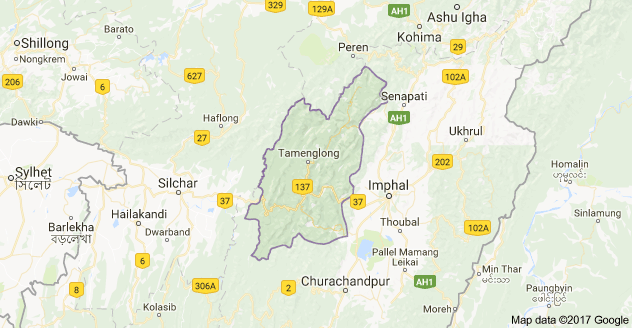
Tamenglong sits on the western mountains of Manipur bordering Nagaland. A hill district, it is a predominantly Naga area. Various Naga tribes like Liangmai, Rongmai, Zeme among many others constitute about 97 percent of the population of this district.
On the face of it, Tamenglong has hardly anything that is remarkable or special. Yes, it is probably among the most backward districts of the country.Like many other towns scattered all over the country,it has a crumbling infrastructure. Roads in the town are almost non-existent. There is just one degree college but it does not have science teaching.
However, the town left a deep imprint on me during my short visit in the second week of February 2017. Warm and friendly people, beautiful mountains encircling the town, fantastic cleanliness in villages, a wealth of flora and fauna and enchanting history make this place special.
Visiting the inaccessible areas nestling in the hills around Tamenglong town, I gathered a wealth of information about the food, culture, religion, politics, nature and people of this area.
Tamenglong Town
The town is situated about 150 kilometres away from the state capital Imphal. Tamenglong district has a population of about 1.5 lakh while the city has just about 20,000 people. It is the most sparsely populated district of Manipur. It is a mostly hilly district.
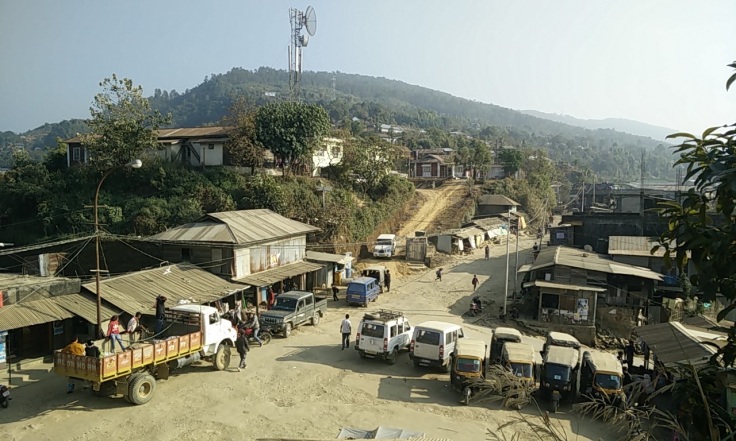
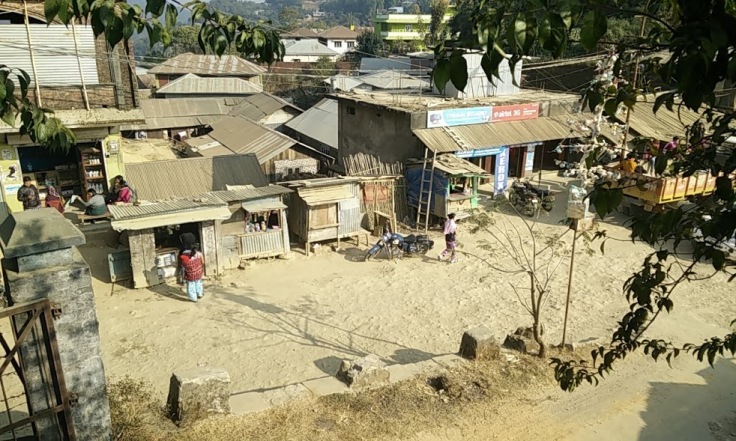
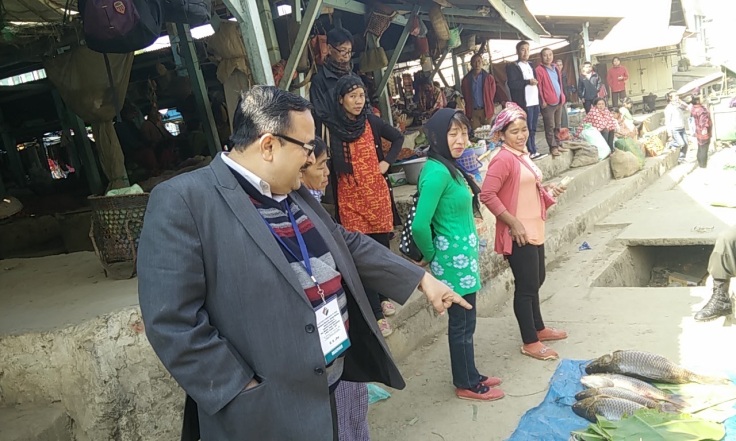
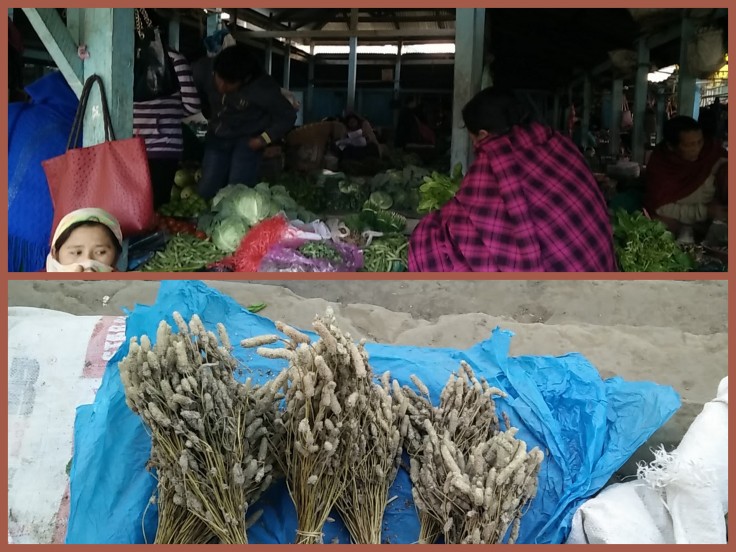
The main market in the town is bustling since morning. Varieties of Fish, meat and herbs on display is astonishing. Looking at a local variety of fish from the Barak river.
People
The Zeliangrong Naga tribe (comprising of Rongmei,Liangmei, Zemei and Pumei) is the most populous tribe here. Kuki, Hmar, Khasi, Chiru and Mikir are the other tribes of the district.
The tribes speak various dialects which are quite different from each other. A person belonging to the Rongmei tribe may not fully understand what his Liangmei counterpart is speaking. Manipuri is the connecting language followed by English to converse with the outsiders.
The district had a bloody past of Naga-Kuki fights in the 1990s. But that is a separate story about which we can talk later.
I came across some beautiful faces in my travel into the interiors of the Tamenglong district. Here is a look at three stages of life -Toddler, Young lady and a centenarian.
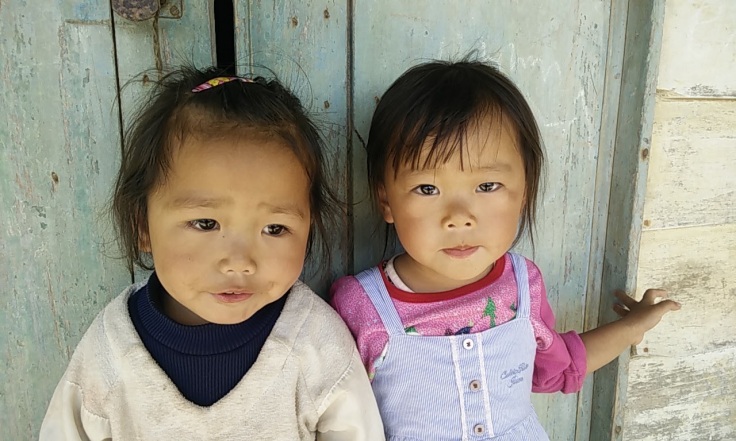

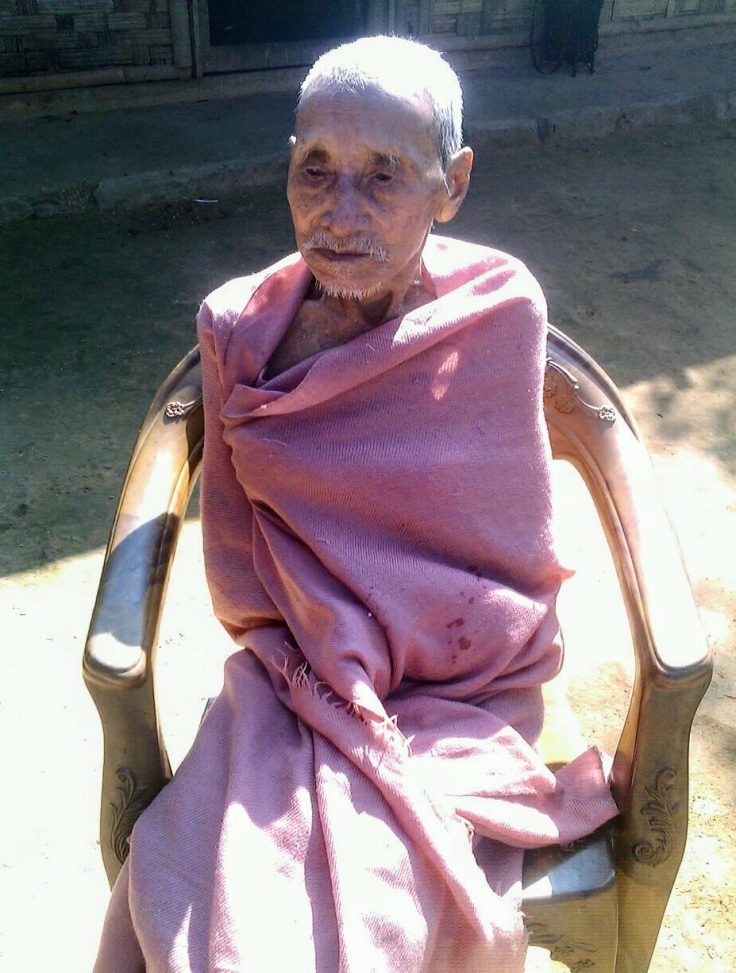
Kainebuanang Moita, 105 years, Tharon Village (near the Tharon caves).. Now bed ridden and unable to talk except in gestures. Today he is the only living person to have seen the pre-Christian Naga culture as the tribes of Tamenglong had converted almost completely to Christianity by 1937.
Flora and Fauna
Tamenglong is a famous place for the migratory Amur Falcon species of birds. They make a stopover here in the month of October-December while travelling from Mongolia China and Siberia on way to South Africa.
In Tamenglong, the tribals see the falcons as messengers of god, their arrival indicating a good year and a bountiful harvest. The birds eat winged termites and other insects that destroy crops.
However, a few years back, Amur Falcons were widely hunted for meat before people woke up to protect these beautiful travellers who refuse to respect the man made boundaries.

The place is known as the ‘Land of the Hornbill’. The great pied Hornbill (Bucerosbiconishomrai), Hiu big and swan Hornbill (Hornbill) and Indian pied Hornbill (Anthracoceros Malabasicusmalabasicus) species are found in Tamenglong.
The hornbill is part of a number of folktales of Naga Tribes.
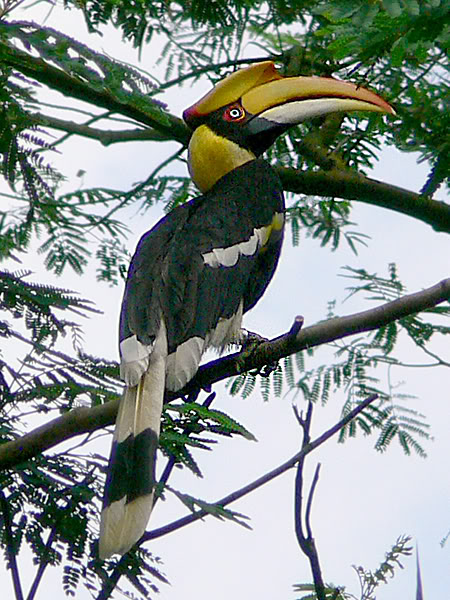
The mountains surrounding Tamenglong are endowed with a rich variety of plants. Flowers can be seen blooming on hill slopes, in the valley, on the edges of of serpentine roads crisscrossing the district.
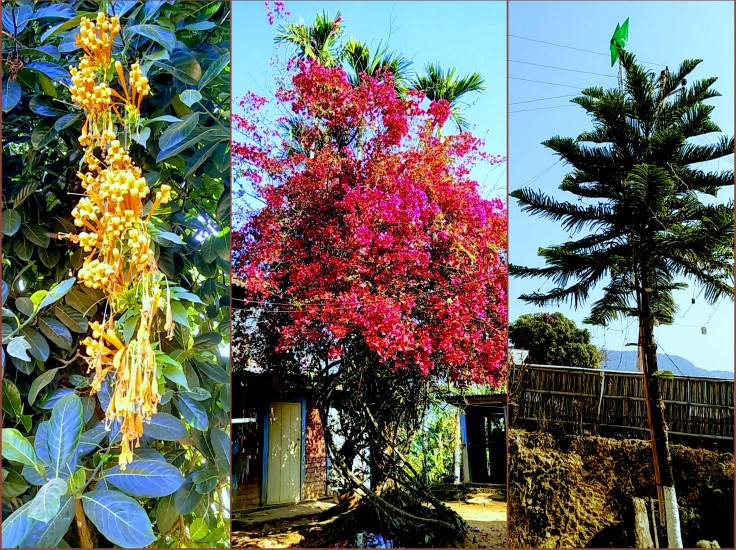
It is an out of this world experience for a city dweller to see plants in their pristine colours. They are to be found every where, not even particularly noticed by the locals as they are so much a part of their day to day experience
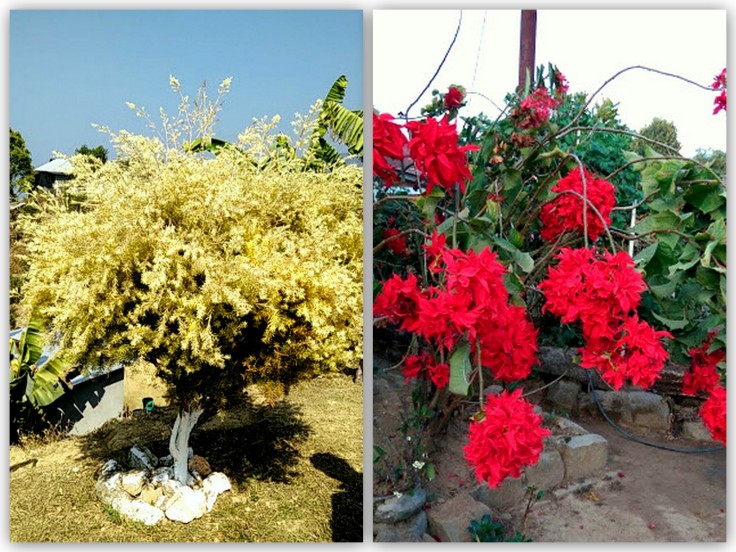
Agriculture
The hills around Tamelgong town are verdant green. On the slopes of the hills, one can see the shifting cultivation (Jhoom) being practiced. They look like ugly wounds on the surface of the lush green hills but locals told me that these may not be as dangerous to the environment as may appear to an outsider. The farmer returns to the site of the shifting cultivation once in say 8-10 years. By this time, the greenery comes back. The shrubs and plants have regenerated.

Litchi and Mango plantations are coming up in Tamenglong town. Land is fertile and farmers happy. Mostly, they don’t use fertiliser but weedicide use is prevalent. Perhaps it is only a matter of time before development catches up with the farmers of this area too.
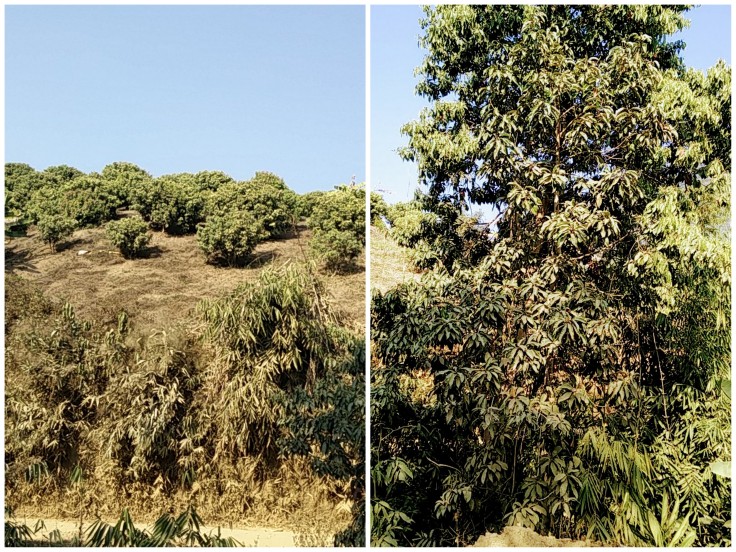
Tamenglong is famous for its fruits especially papaya and orange. Each year in December, an orange festival is organised in Tamenglong town which is very popular among both the farmers as well as people of the town. The best oranger producer farmer is given an award of Rs. 1, 50,000 .
During the festival a beauty contest is also held and the winner is honoured as ‘Ms. Orange’. As a local celebrity she is feted by the elite of the town .
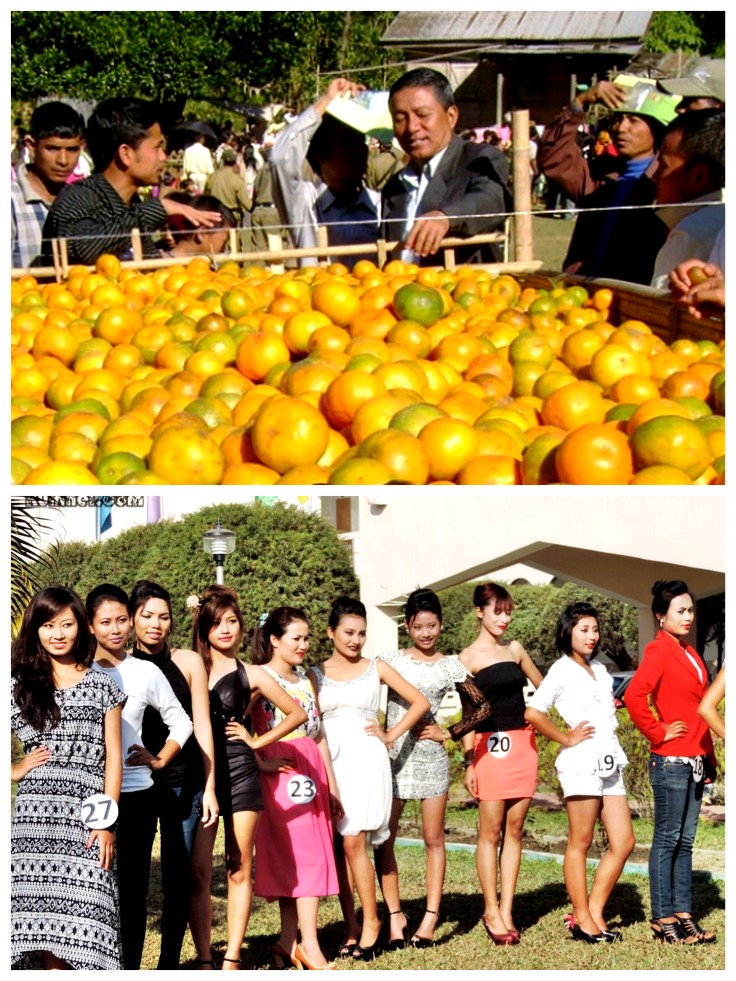
Top- Oranges brought to the festival, bottom- Contestants getting ready for the screenng of the Orange festival
Religion
Tamenglong is a Christian majority district. Most of the Nagas have adopted Christianity as their religion. There is hardly any village today that practices the ancient tribal religion in the hill districts of Manipur including Tamenglong. Majority of the people believe in Baptist Church, of Protestant denomination and only about 20 percent are Catholics.
Indeed, Church functions as the hub of social life. Farmers contribute a portion of their annual produce for the upkeep of the church and for other social functions organised by it. Churches are well maintained, squeaky clean.
Speaking to locals one gets a feeling that Catholic Churches and institutions run by them are relatively better off in resources. The students who get education in Catholic schools can speak better English! Could not confirm if the dynamics of intra-faith conversions from the Baptist denomination to the Catholic work here, but these might.

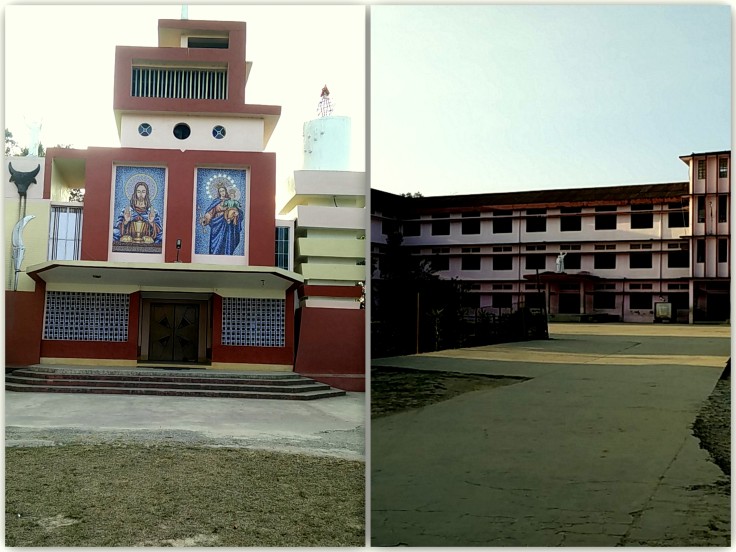
Don Bosco Catholic Church (R) and the higher Secondary school. The school is rich in infrastructure and enjoys a high reputation in Tamenglong
Food
Food habits of Tamenglong people are remarkable. Boiled food with very little salt is the usual died. Even in case of non-vegetarian food, the preparation is without much spice or oil or salt.
People take meal only two times a day, though farmers in villages do take a third meal around noon. The morning breakfast cum lunch is between 8.30 to 9.30. Dinner is over by 7 in the evening.
Non-Vegetarian food has a wide variety to choose from. Beef, Pork, Chicken, Fish, Mutton, Dog-meat, Wild Cat meat, Monkey and large number of animals found in the nearby jungles are eaten with relish.
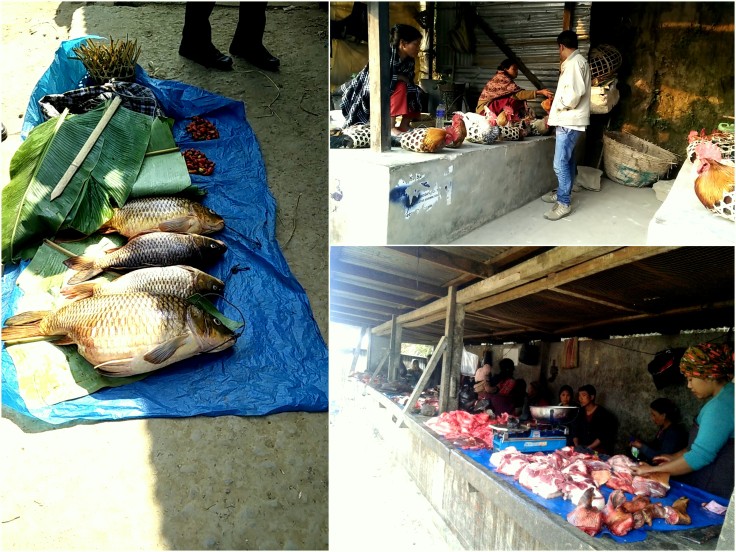

The Dog meat is counted as delicacy. It is quite a common food item. Occasionally of course, delicacies such as Wild Cat or various other kinds of dried meat (monkey, fox etc.) is taken apart from beef and pork and fish..
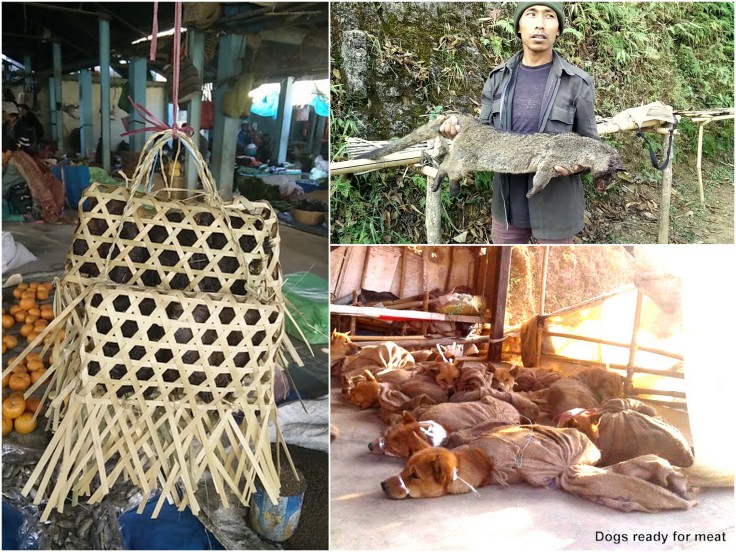

Vegetarian food at Tamenglong is no less varied and rich. From the extra sour cane fruit to wild Aanwla taken as juice after morning lunch. The market is full of vegetables and herbs of various kinds.


Villages
Tamenglong villages impress you with their cleanliness and order. They have well laid out houses, wide lanes, litter free and squeaking clean. Every turn of the road, specially near the villages will have a dustbin made out of old tin can. And these are not driven by the government cleanliness programmes launched recently. These have been part of village life for a long time. Most of the villages have piped water too, though natural streams and rivers are abundant.
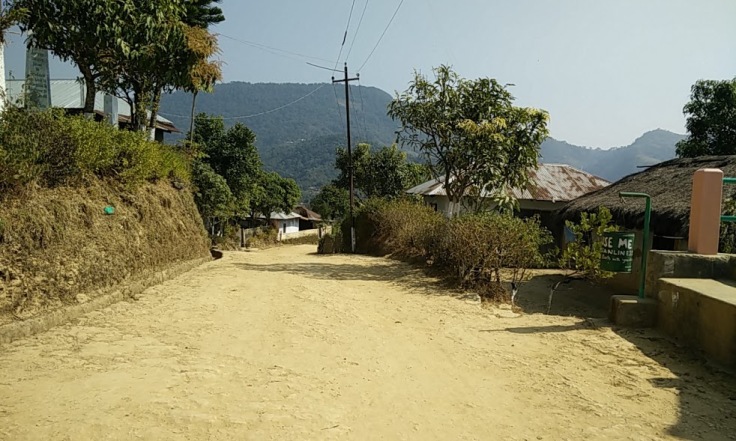
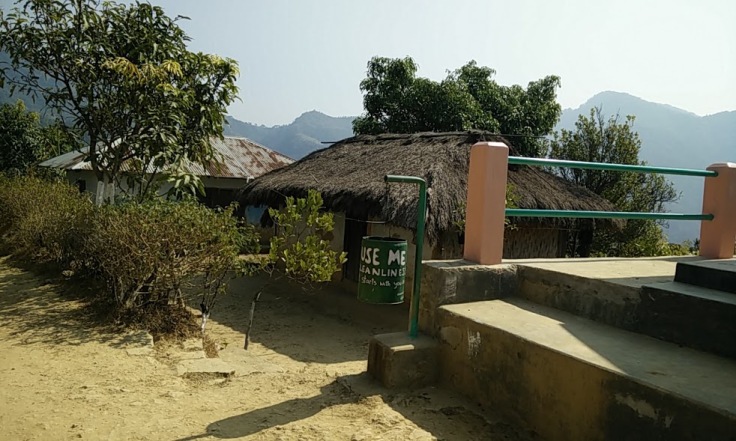
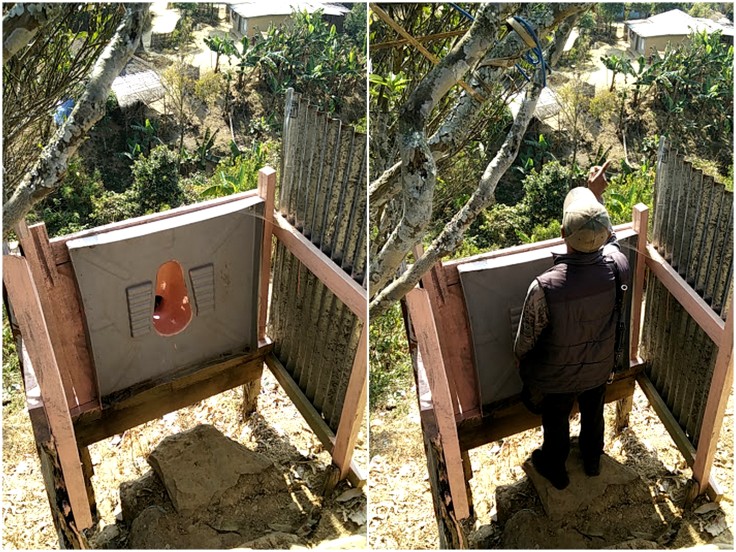
Improvising for Cleanliness- Toilet seat used as Urinal
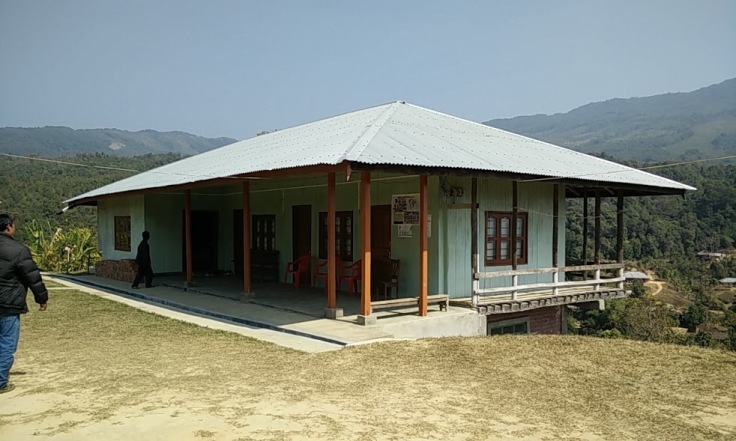
Rani Gaidinliu (1915-1993)
Tamenglong boasts of a galaxy of great tribal warriors. In modern times, Rani Gaidinliu (1915-1993) is one such figure whose contribution to the India’s freedom movement was remembered by the nation on the occasion of her birth centenary in 2015.
She was born in Tamenglong district. Belonging to the Rongmei tribe (also known as Kabui) she was a Naga spiritual and political leader who led an armed uprising against the British in Manipur, Nagaland and Assam.
At the age of 13, She joined the Heraka Movement which aimed for the revival of Naga tribal religion and end of British rule to establish Naga Self Rule. Arrested in 1932 at the age of 16 she was sentenced to life imprisonment by the British and kept in jail for 15 years. Jawaharlal Nehru met her in 1937. He gave her the title of ‘Rani’. Nehru tried for her release from prison but she could be freed only in 1947.
She also faced opposition from Church leaders as they believed that she fought for the revival of the traditional Naga animistic religion Heraka as opposed to Christianity. She went underground again in 1960 to press for the demand of a Zeliangrong district. Finally in 1966 centre reached an agreement with her and she came out of hiding and started working for the betterment of her people through peaceful means.
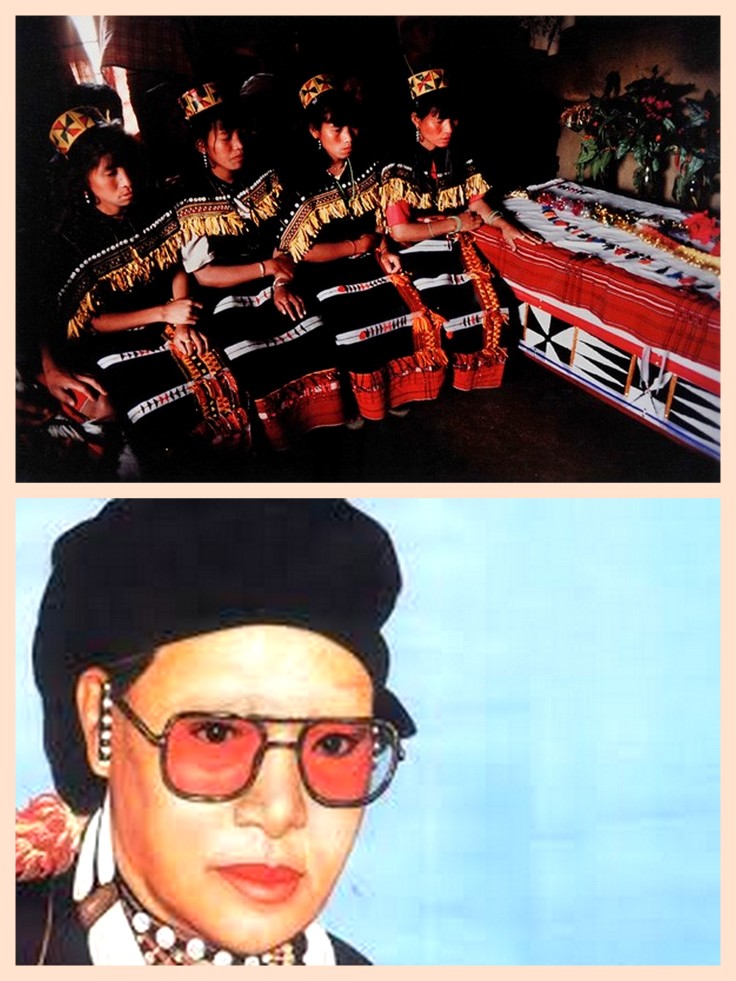
Nature
Hills and valleys, rivers and streams, dense forest and picturesque hill slopes, Tamenglong is a feast for the eyes. Uncurated beauty, serene landscape untouched by human hand make it a place worth exploring.
About 30 kilometers away from Tamenglong town is village Tharon. Trek a few kilometres or go by a jeep, Bolero or any sturdy vehicle to reach Tharon caves which is a network of more than 30 natural caves. Many folk stories are associated with these caves. Exploring the cave with an experienced guide is an adventure indeed.

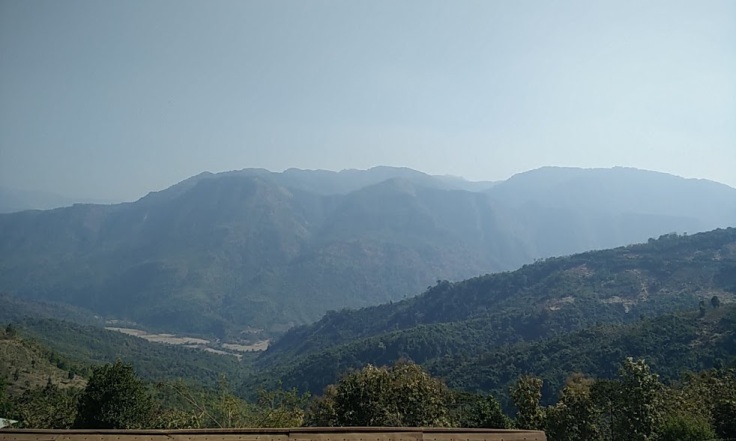
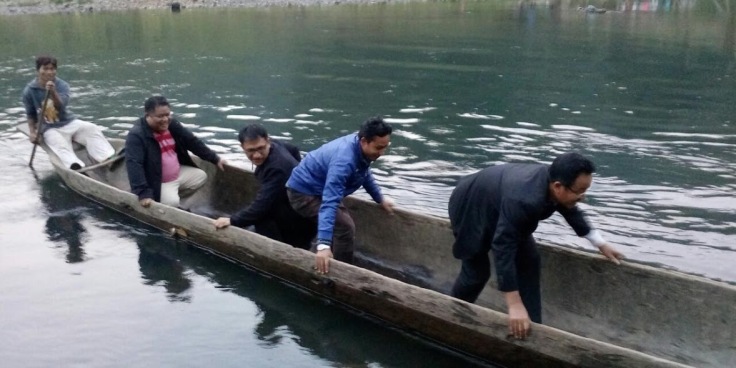
And finally, the Haunted House inside the Deputy Commissioner of Tamenglong’s bungalow.
It is said that in 1930s a British SDM posted here was killed. People claim, if you sleep alone in this big house, you will still hear movement inside. Really?
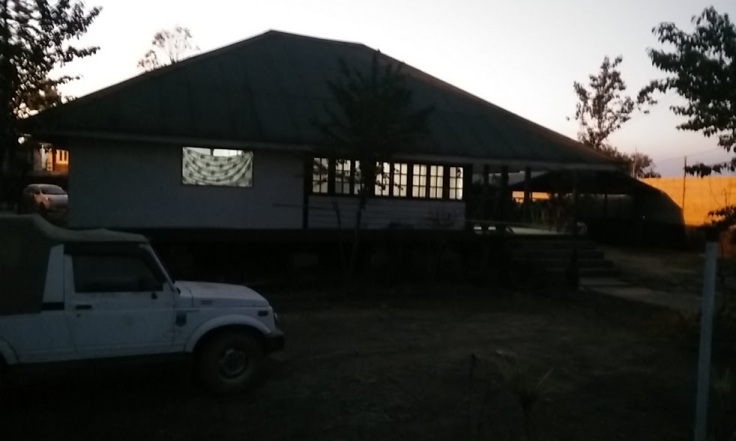
***
Very Very Intresting…. Really, The Place and People. are *Worth* *True-Love* *May Karuna -Sagar-Sri-Guru* and *Karuna-Abdhe-Sada-Shiv* *Shower, These People and Place, with Divine Light….. Ever everyone’s… Dr Capt Ajit…
LikeLiked by 1 person
Great
LikeLiked by 1 person